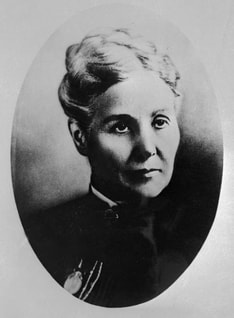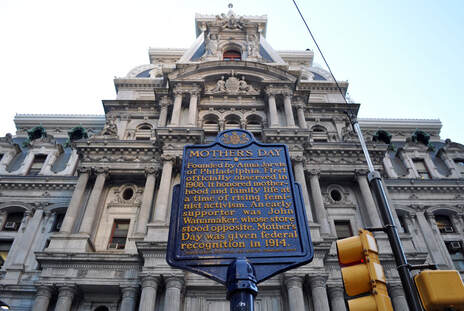History of Mother’s Day
Written by Nate Aleshire
Mother’s Day, as Americans know it, was first made an official holiday in 1914. This was the culmination of over 50 years of dedicated work by many different women, most notably, Julia Ward Howe, Ann Jarvis, and her daughter, Anna Jarvis. These women were prolific organizers, starting movements and groups specifically for mother-based campaigns, child-care, education, and even world peace. However, the tradition of celebrating mothers and motherhood goes further back in history.
Evidence suggests that Ancient Greek and Roman societies had festivals and celebrations intended to honor the goddesses of motherhood and mothers, like Rhea, Cybele, and Gaia. More modern and structured celebrations can be found in early Christianity, which is referred to as “Mothering Sunday.” In this context, it was a festival held on the fourth Sunday of Lent, most predominantly to recognize and exalt the Virgin Mary, mother of Jesus Christ.
Mothering Sunday may have been based on other origins, as some historians have speculated. Some insist that it was modified from festivals for Cybele, and was changed to appear more welcoming to pagan converts. It is also connected in some way to celebrating one’s Mother Church, the church one was baptized at. This specific practice is recognizable in 16th century England, as young children who were sent away from home for work were given the opportunity to revisit their home communities. Returning from positions as domestic workers, apprentices, or miscellaneous laborers, they often brought gifts or other tokens of appreciation home to their mothers, designating the occasion as a family reunion with a particular veneration for one’s mother.
What about American celebrations of Mother’s Day? Ann Jarvis was an American activist who began her advocacy during the 1850s and quickly earned the nickname “Mother Jarvis.” She lived in western Virginia (what would become present day West Virginia), taught Sunday school, and witnessed the poor living conditions of women and children. She identified a need for better access to education and support for mothers in the Appalachian mountains, and acted upon it. She went on to coordinate “Mothers’ Day Work Clubs” to educate inexperienced mothers on how they could better care for their children, prioritizing sanitary and safe conditions and procedures.
Evidence suggests that Ancient Greek and Roman societies had festivals and celebrations intended to honor the goddesses of motherhood and mothers, like Rhea, Cybele, and Gaia. More modern and structured celebrations can be found in early Christianity, which is referred to as “Mothering Sunday.” In this context, it was a festival held on the fourth Sunday of Lent, most predominantly to recognize and exalt the Virgin Mary, mother of Jesus Christ.
Mothering Sunday may have been based on other origins, as some historians have speculated. Some insist that it was modified from festivals for Cybele, and was changed to appear more welcoming to pagan converts. It is also connected in some way to celebrating one’s Mother Church, the church one was baptized at. This specific practice is recognizable in 16th century England, as young children who were sent away from home for work were given the opportunity to revisit their home communities. Returning from positions as domestic workers, apprentices, or miscellaneous laborers, they often brought gifts or other tokens of appreciation home to their mothers, designating the occasion as a family reunion with a particular veneration for one’s mother.
What about American celebrations of Mother’s Day? Ann Jarvis was an American activist who began her advocacy during the 1850s and quickly earned the nickname “Mother Jarvis.” She lived in western Virginia (what would become present day West Virginia), taught Sunday school, and witnessed the poor living conditions of women and children. She identified a need for better access to education and support for mothers in the Appalachian mountains, and acted upon it. She went on to coordinate “Mothers’ Day Work Clubs” to educate inexperienced mothers on how they could better care for their children, prioritizing sanitary and safe conditions and procedures.

Mother Jarvis also took an active role in mending ties severed by the Civil War and in 1868 advocated a kind of memorial day. This Mothers’ Friendship Day, as she imagined it, would have promoted peace between veterans of the Union and the Confederacy, by commemorating mothers on both sides of the conflict for their support.
Julia Ward Howe was another activist who also participated in social support during the Civil War. An abolitionist and suffragette, she volunteered for the United States Sanitary Commission to ensure hospitals remained sanitary for the injured and ill soldiers. In 1870, Howe followed in a similar vein to Mother Jarvis, as she proclaimed the need for a “Mother’s Day for Peace.” In Howe’s vision for this day, mothers would unite and work together to prevent further wars and bloodshed. Her reasoning was because every soldier who was injured or killed was also a son, whose harm or death would deeply affect his mother. Howe believed that this act of mothers interacting would encourage peace by discouraging conflict. Her design did gain some traction in cities for the years following 1870, but it fell out of practice before World War I.
Mother Jarvis passed away in 1905, and her daughter Anna M. Jarvis was prepared to take on her mother’s mantle. More specifically, Anna wanted to memorialize her for all the hard work that she gave to mothers across the Nation. She could think of no better way to do so than to dedicate a day to celebrating mothers and all of their dedication to their families. She began to petition, write letters, and run campaigns to get the attention of other public figures to approve of her movement, spending large amounts of her own money to spread the word through pamphlets and booklets.
Julia Ward Howe was another activist who also participated in social support during the Civil War. An abolitionist and suffragette, she volunteered for the United States Sanitary Commission to ensure hospitals remained sanitary for the injured and ill soldiers. In 1870, Howe followed in a similar vein to Mother Jarvis, as she proclaimed the need for a “Mother’s Day for Peace.” In Howe’s vision for this day, mothers would unite and work together to prevent further wars and bloodshed. Her reasoning was because every soldier who was injured or killed was also a son, whose harm or death would deeply affect his mother. Howe believed that this act of mothers interacting would encourage peace by discouraging conflict. Her design did gain some traction in cities for the years following 1870, but it fell out of practice before World War I.
Mother Jarvis passed away in 1905, and her daughter Anna M. Jarvis was prepared to take on her mother’s mantle. More specifically, Anna wanted to memorialize her for all the hard work that she gave to mothers across the Nation. She could think of no better way to do so than to dedicate a day to celebrating mothers and all of their dedication to their families. She began to petition, write letters, and run campaigns to get the attention of other public figures to approve of her movement, spending large amounts of her own money to spread the word through pamphlets and booklets.

Anna reached some measure of success in 1907, when she memorialized Mother Jarvis at the church where her mother had taught, in Grafton, West Virginia’s Methodist Church. This event took place in May, and a service was held to recognize all mothers in May the following year. These services led to the tradition of Mother’s Day occurring on the second Sunday of May every year.
When the mayor of Philadelphia declared a Mother’s Day in the city, the holiday became more popular across the nation. Politicians in Washington, D.C. liked the idea, and their endorsement gained even more favor for Anna’s quest. Many individual states, beginning with West Virginia, began declaring state Mother’s Days. In 1914, Congress and President Woodrow Wilson approved a bill to make Mother’s Day into a national holiday. The new national Mother’s Day was at first a simple day of respect, often featuring church services to celebrate mothers everywhere, living and deceased. This was how Anna had envisioned it, with relatively quiet visits between the family and attending religious services together.
When the mayor of Philadelphia declared a Mother’s Day in the city, the holiday became more popular across the nation. Politicians in Washington, D.C. liked the idea, and their endorsement gained even more favor for Anna’s quest. Many individual states, beginning with West Virginia, began declaring state Mother’s Days. In 1914, Congress and President Woodrow Wilson approved a bill to make Mother’s Day into a national holiday. The new national Mother’s Day was at first a simple day of respect, often featuring church services to celebrate mothers everywhere, living and deceased. This was how Anna had envisioned it, with relatively quiet visits between the family and attending religious services together.

Anna M. Jarvis, the woman responsible for the holiday’s widespread celebration, eventually came to reject what Mother’s Day had become. As early as 1920, only a few years after it became a national holiday, she believed that it had been commercialized. Anna thought that the companies that sold cards, flowers, and other popular gifts were taking advantage of what she imagined as a genuine display of endearment for mothers. She felt that these companies were undermining what she wanted Mother’s Day to stand for: a simple showing of respect and love for one’s mother.
Anna contended with the popular, commercialized version of Mother’s Day until she passed away in 1948. During those 28 years, she had decried companies that heavily advertised for Mother’s Day, going as far as to condemn some charities for using the holiday. Anna brought numerous parties to court for their use of the term “Mother’s Day.” Just as she had spent her own money to campaign in favor of the holiday, she used her own money to pay the court fees, trying to end its commercialization. Anna had even lobbied the federal government in order to remove the holiday from the calendar.
Did you know? More phone calls are made on Mother’s Day than any other day of the year. These holiday chats with Mom often cause phone traffic to spike by as much as 37%!
Anna contended with the popular, commercialized version of Mother’s Day until she passed away in 1948. During those 28 years, she had decried companies that heavily advertised for Mother’s Day, going as far as to condemn some charities for using the holiday. Anna brought numerous parties to court for their use of the term “Mother’s Day.” Just as she had spent her own money to campaign in favor of the holiday, she used her own money to pay the court fees, trying to end its commercialization. Anna had even lobbied the federal government in order to remove the holiday from the calendar.
Did you know? More phone calls are made on Mother’s Day than any other day of the year. These holiday chats with Mom often cause phone traffic to spike by as much as 37%!
